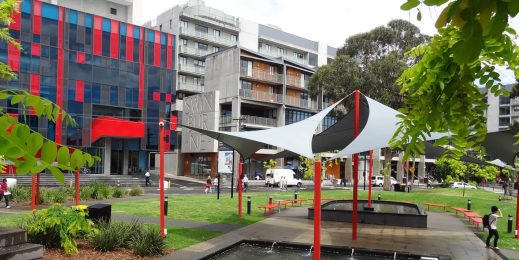
Ballarat Council releases efficiency genie, unleashes user-led innovation
No-one bats an eyelid at professionals using Excel to build their own spreadsheets, or PowerPoint to craft presentations. By the same token there’s no reason why end users shouldn’t use PowerApps to create their own low-code or no-code applications according to Ballarat Council – which is doing just that.
As part of a digital transformation at the Council, which has seen it transition to the Azure cloud and adopt Dynamics 365 and Office 365, Ballarat has unshackled user-led innovation and is encouraging professionals to innovate and create new applications.
There’s now a team of around 38 people who are keenly engaged, regularly using PowerApps to craft new applications that manage an array of tasks – from collecting data from school crossing inspections through to an employee gift register as well as to manage staff rostering.
To get to that point where it can democratise applications development to some degree, Ballarat needed to move off its legacy on–premises solutions and embrace state of the art cloud says Rhett Nunn, manager for ICT Solution Design and Development. That was particularly important given the speed at which the area is growing.
With a population of more than 105,000, the regional city of Ballarat- 110 km north west of Melbourne – is growing rapidly and forecast to reach 140,000 by 2030.
To meet the needs of that growing community Ballarat decided it needed a digital platform that could grow in step with its needs, while also enhancing the resilience and reliability of its services. Previously a small IT team had managed the in–house data centre, virtual machines and applications – but that had scale and skills limitations which challenged the Council’s ability to be nimble in response to rising user needs.
According to Nunn; “Moving to a cloud-based platform was really a big driver to remove those risks, reduce costs, and make it a lot easier for us to implement better disaster recovery and high availability. Ultimately, we wanted to get our hands on modern building blocks to solve business problems.”
Moving to Azure also provided Ballarat with the opportunity to audit and review its applications catalogue which comprised a series of specialist or niche applications developed specifically for local councils, but which are often slow to update and transform.
Nunn explains; “What we wanted to do at a high level was to go for a holistic, commodity-based platform for everything that we did,” adopting best practices from around the world to first, host Ballarat’s infrastructure and then shift the dial on productivity, as well as enhancing the business systems available to support users and meet the needs of residents.
 Three clouds boost for Ballarat
Three clouds boost for Ballarat
The solution that best fit Ballarat’s needs was provided by Microsoft’s three clouds – Azure, Office 365 and Dynamics 365.
Dynamics 365 was selected because, according to Nunn; “It gives us broad capability to meet our immediate needs, and the agility to adapt to the future. Whereas if we’d gone with one of the competitors we would be missing key pieces. We wanted a well-rounded platform and we found strength in Microsoft’s offering.” There were some gaps in Dynamics, but Nunn says those have been plugged by light-weight solutions using the Office 365 power platform, and serverless capability in Azure.
Ballarat was supported by Olikka, for the lift and shift to Azure exercise, and DXC to help with the replacement of the financial management system with Dynamics 365.
For pretty much everything else it’s been a case of DIY – and that’s by design, says Nunn.
“When we first got Office 365, we saw that Power Apps and Flow (Power Automate) were there, as well as Power BI. We thought we’d just try and dabble and see if we could solve some simple problems.,” noting that creating a digital gift register was a great proof of the approach.
Local government employees are required to register any gifts they receive to help guard against fraud. In the past this had been a paper–based process – people would fill out a form, print it, send to their manager who then signed it, and forwarded that to the compliance team which would keep the record.
Instead, Nunn and his team used Power Apps to create a lightweight smartphone app that lets users fill out details of gifts received, share that with their manager, have it approved online then routed to compliance. There’s no paper chase involved, much less delay – and transparency for compliance which can easily identify any patterns that might be concerning.
The app was well received – and Ballarat’s efficiency genie was out of the bottle. Says Nunn;
Demand just exploded. Everyone wanted to remove paper and improve their services and processes with automation, apps and reports. And that’s when we knew we were onto something.
Our challenge was to work out how we could keep up with the enthusiastic demand. We recognised that the tools were designed for power users – so could we mentor and equip the organisation to implement some of their own innovative ideas?“
Ballarat founded an internal Power User Group with members from across the organisation which would focus on bite–sized transformation. The group is facilitated and mentored by Ballarat’s Office 365 Practice Lead, Sam Gray, and Office 365 Practitioner, Michelle Moll.
To streamline the work two teams were created – the Collaborators Group and the Makers Group. Collaborators assist their team and the organisation by simplifying and enhancing collaboration with Office 365 tools, such as Teams, Planner, and SharePoint.
The Makers meanwhile transform business process through lightweight digitisation and automation using Power Apps, Power Automate and Power BI.
Nunn says that while training and mentoring is provided, the group is encouraged to explore the tools organically and share their success and excitement. Demand to join the group rose – meaning that a team of 12 initially has now expanded to 38.
At time of writing 335 Power Apps and 592 Flows have been created – while not all are in production, the update reflects the enthusiasm for innovation.
Rachel Verdoorn an Office 365 Power User in Ballarat’s Operations and Environment Depot for example says that the team has used Flow (Power Automate) to schedule regular or repetitive tasks and display them in its team planner.
“It has allowed our team – that is made up of majority part-timers – to be across our team’s tasks and ensures we achieve our core functions in picking up tasks assigned to fellow team members in periods of planned and unplanned leave, as well as during busy periods when tasks are reprioritised. Overall, an extremely effective tool we use to meet our business units needs and keep our communication lines open,” she says.
Teams also has been widely embraced as an important communications and collaborations tool.
“By exploring Teams to solve their own problems, it got to the point where they were starting to know more about some parts of Teams than we did. Shifts is an example of that,” says Nunn.
“Our Aquatic & Lifestyle Centre has 150 casuals over the busy period, and they needed a way to work out how to roster staff on and off. They were using spreadsheets previously and found it difficult to communicate the roster to the team. Swapping shifts was also a nightmare. So, they dived right into using Shifts in Teams and have had fantastic success. Through the Power User Community, they have since taught other parts of the broader organisation how to use Teams for rostering too. The library and animal shelter have made the most of it.”
A Power App has also been developed and used to collect data and photographs from school crossing inspections. If any problems are detected the inspector automatically alerts the team that needs to fix it, and there’s an audit trail created of what issues have been identified, and which have been fixed.
To Nunn’s way of thinking Power Apps and Power Automate has democratised application development and automation in much the same way as Excel democratised spreadsheet creation, and PowerPoint handles presentations. While the IT team has instilled guidance and controls over what user-led teams can and can’t develop, it’s encouraging continuous bite-sized transformation says Nunn.
Instead of requiring business cases to be developed for every application, end users who identify a challenge can work with the Power User Group to have a go themselves at building a solution.
According to Nunn; “If you can use Excel and PowerPoint, then you can make a Power App.”
Some guardrails have been established – but Nunn stresses the need to achieve the balance between full control and the risk of shadow IT. “We’ve got access to the data. We can properly control it, and manage it, and mitigate any risks.
“If we are too restrictive, we risk staff going around us and using other systems that we would have no or limited visibility of, whereas this way, I think we’ve got the balance right. We’ve really hit the mark by leading and equipping the organisation with the right tools, practices, data and knowledge to enable bite-sized innovation and transformation from within.”

















